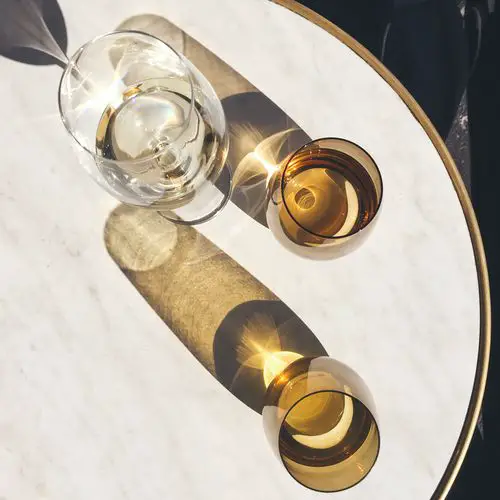Bordeaux’s “Fête de la Fleur” (Flower Festival) will be held on the 20th June at Chateau Lagrange in Saint Julien. The Fête de la Fleur has traditionally been a movable feast, sometimes hosted by a chateau or in the city of Bordeaux.
This year Lagrange has been chosen to host the Flower Festival in celebration of the 30th anniversary of the acquisition of the chateau by the Japanese Suntory Group.
The Fête de la Fleur takes place every two years at the end of the week during which Bordeaux holds the wine fair Vinexpo. From its origins as a simple garden party, the Fête has evolved into an elaborate affair and 1500 guests are expected to the gala dinner in the evening.
It’s an important event with wine professionals, journalists, chefs, celebrities, stars of stage and screen and politicians sharing their passion for wine.
Grape blossom in Regis Chaigne’s vineyards at Chateau Ballan Larquette
The Commanderie du Bontemps (Médoc, Graves and Sauternes Wine Brotherhood) has origanized the Fête de la Fleur annually in Bordeaux since 1950 to celebrate the grape blooms on which wine makers pin all their hopes.
Vine growers wait anxiously for them to appear and watch them closely as the quality of the flowering is indicative of both the quality and quantity of the future harvest.
Grape blooms are not the only flowers honoured – the blossoms of the Acacia tree (Robinia pseudoacacia, commonly known as the Black Locust) are also celebrated. The Acacia is an important tree to the vine growers of Bordeaux – it‘s long lived and durable wood is used to make vine stakes.
It was introduced to France in the 1601 by Jean Robin, botanist of King Henry IV. The white flowers droop in pretty plumes a little similar to those of Wisteria and are intensely fragrant (reminiscent of orange blossom). In fact you often find tasting notes for Bordeaux white wines listing ‘acacia flowers’ as descriptions for their aroma.
The other flower that is important to vine growers is the Lys de Marie (Madonna Lily) which flowers in June. Vine growers used the date of its flowering to calculate the grape harvest. Traditionally the grape harvest was due in 90 days after the lilies flowered.
Chateau Lagrange is a beautiful setting for the Fête de la Fleur with its idyllic parkland and lake complete with swans. Lagrange has very ancient roots and was owned by the Knights Hospitallers in 1289 (a monastic military order founded alongside the Knights Templar).
Not much is known about the estate but it was called the Maison Noble de Lagrange Monteil. Monteil de Adhémir was Bishop of Puy en Velay and was one of the instigators of the First Crusade between 1096 – 1099.
In the 1740s Lagrange was known as Brane Saint Julien, it’s owner being the same Joesph Brane who owned Chateau Mouton Rothschild. In 1796 Lagrange was sold to Jean Valerie Cabarrus, Napoleon’s Finance Minister in Spain, who constructed the large Italianate tower.
In 1842 Count Duchâtel, Minister of the Interior of King Louis-Phillippe, acquired the château and Lagrange entered a Golden Age.
The Count vastly improved and increased the vineyards and installed a field drainage system which lead to the château being recognised at the time as one of the most progressive and technologically advanced properties in the Medoc. He also encouraged the painter Jules Breton to stay and paint the grape harvest at Lagrange in 1864 – the painting is now housed at the Joslyn Art Museum.
Lagrange was classified as a Third Growth (3ème Cru Classé) in 1855 but these halcyon days dwindled with the onset of the 20th century with the World Wars and Depression that came with it. In 1981, Lagrange was at its lowest point in its history.
Situated adjacent to Second Growth Chateau Gruaud Larose, several large parcels of the vineyard had been sold off one by one, and less than a third of Lagrange’s 388 acres were still under vine, mostly in poor condition and the chateau were in serious disrepair after years of neglect and a devastating fire in 1970.
However Lagrange rose from the ashes when it was bought by Suntory of Japan in 1983. Suntory recognised the past greatness and huge potential in Lagrange and as the largest drinks conglomerate in Japan, Suntory had the resources to bring Lagrange to a “state of the art” level of quality.
Suntory have dealt with its restoration with great sympathy and the entire estate was renovated and transformed with massive investments. Japanese intuition hand in hand with Bordelaise expertise has worked wonders for this stunning chateau.


